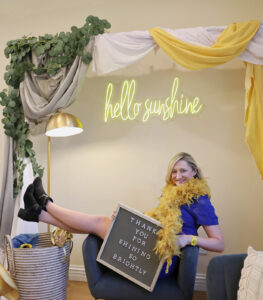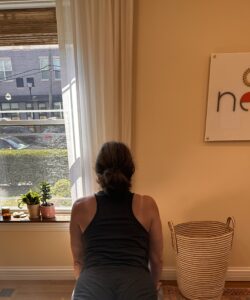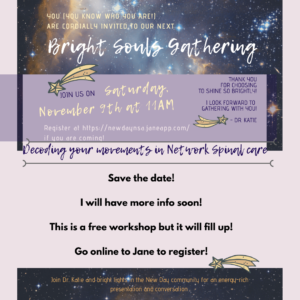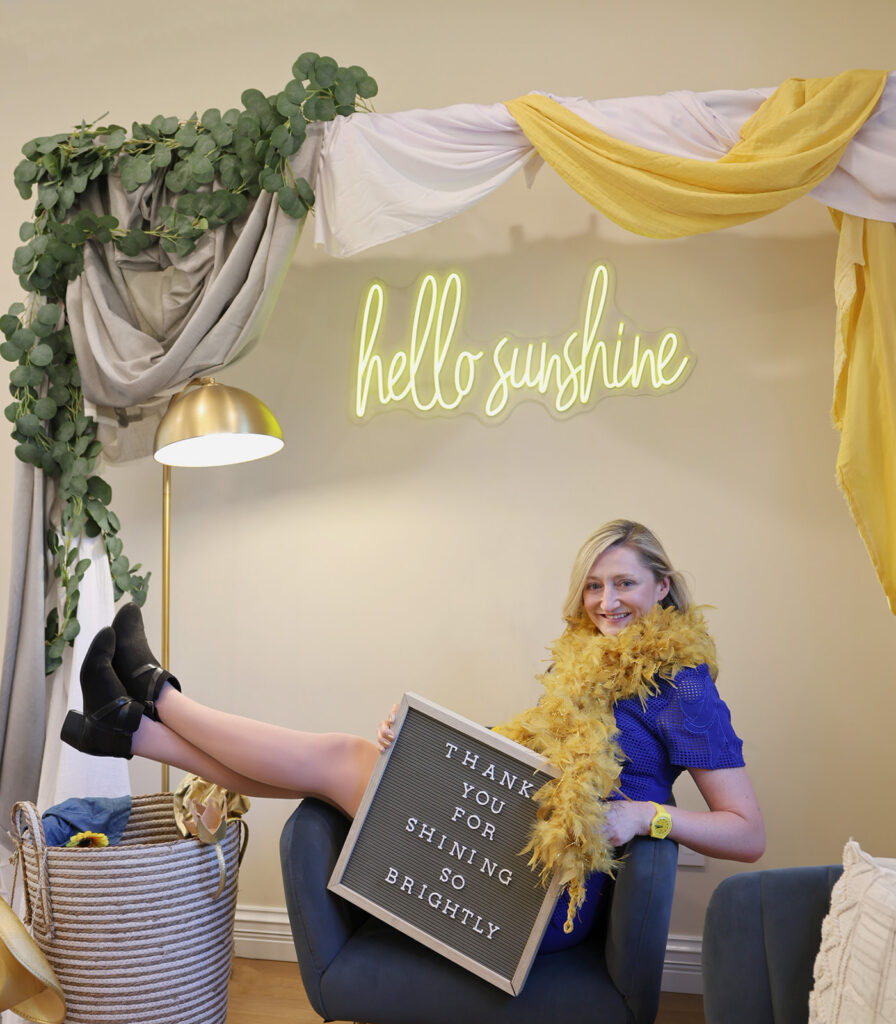Decoding your body’s
MOVEMENTS on the table
during Network Spinal Care
💥🕺🌀🏊♀️🐈💗🐛

GOOD MORNING New Day!! Thank you, as always, for opening this message and being a part of the New Day community ☀️🏡💗
When you are getting care with me and you’re on the table, do you ever find that you are suddenly moving your body and spine in a way that surprises you?
Maybe a twitch? Maybe a herky-jerky sort of movement? Maybe a smooth, almost “worm” like movement??
OR maybe you sometimes lay there wondering why the person on the table next to you seems to be moving so much?? (And would they please stop, already! 😂😂😂)
Being open and response to movement on the table (and just as importantly after your adjustments!) is a very important part of Network Spinal care.
But sometimes I think there can be a lot of confusion about this, especially as we lay on the table every week.
“Am I moving enough?”
“But I don’t feel like moving!”
“Aren’t I moving just because I want to? The adjustments didn’t make me!”
“I can’t believe how much I’m moving!”
“Why is Dr. Katie telling me how to move? Shouldn’t it just happen automatically for it to be real?”
These are ALL questions that I wish to discuss in upcoming messages, and as I cook up a special advanced workshop for New Day clients “Decoding your movements during Network Spinal Care; how to understand and optimize the movement response” (more on that below!)

Huge shout-out to Taylor @T.S_photographyy for her amazing photos of the event last week!!
The first thing I want to say is that I understand that for some of us, this conversation might feel a little intimidating.
We are worried that we are doing it wrong.
Or maybe, we find ourselves thinking, this form of care is just plain weird! What if holding still is the “normal” thing to do! 😂🙏
Let me put it to you this way. If you were a cat and I was adjusting you, do you think you would remain completely still?? 😺😺😺
And it’s the same with dogs or any animals (and young children, by the way!) In short, animals and young children move and stretch intuitively because they aren’t in their heads about it.
And YOU are a human animal 🐈🐐🐕🧍♀️
Use this idea to open yourself up to the possibility that there should be some movement in your spine and body during a 15 minute adjustment (even small amounts)
Now that we’ve gotten that out of the way, i want to begin this conversation (which will be ongoing over the next several weeks) by discussing one of the most basic types of movement that you want to feel for and allow during your adjustments 💥💥💥
Speaking of a “human animal”! This is actually a really great video that I recommend (and for some of you possibly your first exposure to Donny!) See what you think of this guy’s movements on the table and Donny’s narration 😁
Picture this. You’re laying on the table and I’ve done 1-2 adjustments on your neck or sacrum.
You notice that you suddenly feel a bit more relaxed, and maybe you take a deep breath 😮💨
You also suddenly feel the urge to move or stretch your leg, hip, arm, shoulder, or head. And so you roll one of your shoulders. Or you stretch your hips to one side. Or you pick up your head and you move your jaw. Something like that.
What is this, and why is it happening?
The way I describe the feeling that coincides with this movement is like you were wearing a sweater, or tights, that were too tight or bunched up in some kind of way. You have a sudden urge to worm and stretch your way to straighten it out 🐛
This type of movement generally happens early on in the Network Spinal care process (and all along the way!) and happens with your connective tissue (or fascia) in your body becomes more energized and flexible 💥✨🌀
The other thing that’s happening, is that you are simultaneously becoming more and more aware of your body ☀️
Yes, it’s true that you are laying on your stomach, possibly with your eyes closed, and nothing else to focus on.
But it is also that case that the adjustments themselves are giving your brain access to find and feel tension and distortions that might otherwise be under your radar.
If I were to come up with a name for this type of movement, I might call it the “sweater squirm,” “spanx shift,” or “herky jerky leg.” 😂🤗😍

Feel an urge to lift up or move? Make sure to do it!
The benefits of this part of your care, where in response to the adjustments you feel the urge to “sweater squirm,” you do it, and you then reach a new baseline of energy and experience in your body are MANY.
First, your connective tissue (fascia) goes EVERYWHERE 🤯
It’s under your skin, it’s wrapping around your muscles, your nerves, and it’s wrapping around your internal organs 🌀🌀🌀
It’s even been found scientifically that signals travel through your body’s connective tissue FASTER than signals travel through the nerves, and that those signals travel in a way that resembles sound vibration 💥💥💥
This helps account for why it hopefully feels like I’m working EVERYWHERE, when in fact I only seem to be touching small, specific areas (and this is also why I use the “pebble dropping into the lake” visual with you newbies– to help you feel this reality)
According to Donny Epstein, creator of Network Spinal care, when energy is constricted in the connective tissue this is the BIGGEST PROBLEM for your body and corresponds to an energy-poor, survival, pain-based, fight-or-flight based experience of life and your body 😱😰🥲
Therefore, getting an improvement in the connective tissue through Network Spinal care is key and is one of the first things that needs to start happening in the care process.
When you are here with me for your care this week, especially you bright souls who’ve been with me for 6 months-11 years, I want you to really start to focus on the movement response and feel for yours in an open and curious manner. This is all part of the adventure that is Network Spinal care.
Do you feel like moving? Why or why not? How, or where? Does today’s adjustment feel usual, or can you feel it like it’s brand new?
If you can feel movement, what does that movement resemble for your? (Sweater-squirm? or something else?) Do you take a big breath in the midst of any of this? And what’s happening with your spine in the meantime?
Make sure to share with me or ask me anything that pops into your head about this so that I can help optimize this experience for you. There is always a layer deeper we can go and I am here to engage you in this process (it’s called “New Day,” not “Old Day” 😊)
In the meantime, I am setting up an in-person experience for our Bright Souls to explore the what, how, and why of the movement response in Network Spinal Care. I’ll have more details soon, but for now I have the date and a link to register!
Thank you again, for shining so brightly, and I will see you at your adjustments this week 💖

This will fill up, so please register now if you know you want to come to the Bright Souls Gathering on the scheduling website


